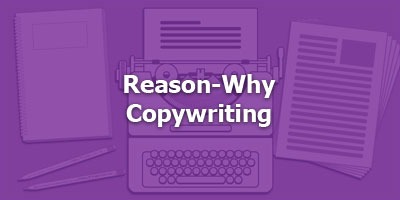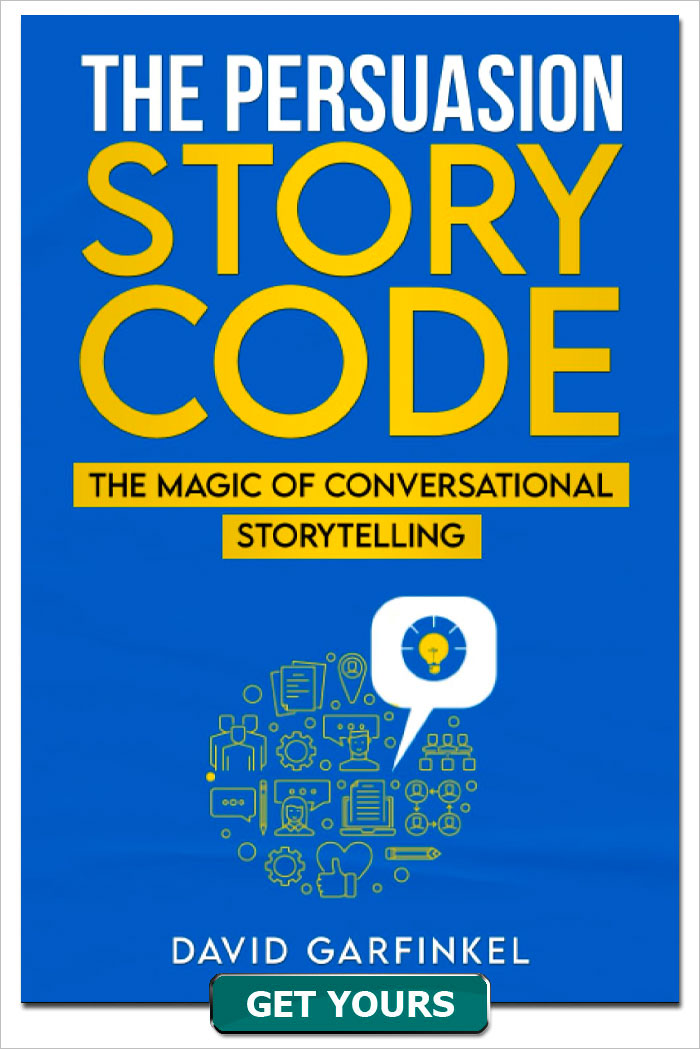Reason-Why Copywriting
Published by: David Garfinkel on 10-26-2020
Tweet
Today we’re back with our Old Masters series, with a topic that has been begging to be on Copywriters Podcast for a long time: Reason-Why Copywriting.
First, a little about our Old Master, and he really deserves the title, even though he is not particularly well known these days. It’s George Burton Hotchkiss. We’ll be drawing from a couple chapters in his book Advertising Copy, published in 1924. Almost 100 years ago.
Hotchkiss worked as a reporter for the old New York Sun newspaper, and after that, became a copywriter for the ad agency which later became the famous firm known today as BBDO. Later he went on to found the Department of Advertising and Marketing at New York University, where he was chairman and where he worked for 48 years.
What he says about reason-why advertising in his book is really not that different than what’s true and what works today. We’ll dive into it and pull out a few of the most important pieces.
Now, reason-why copywriting.
It’s alive and well today, but people don’t talk about it a whole lot.
We’re going to spend a few minutes talking about reason-why copy, and then I’ll give you some examples of parts of a promo written first as reason-why copy, and next as emotional copy.
But first, let’s get clear on our terms.
What is it? In short, reason-why copy appeals to the prospect’s reason, while what we’ll call “emotional copy” appeals mainly to emotions. Now to be sure, you can mix elements of the two kinds of copy in the same email, or ad, or web page. But for this show, we’ll treat them as separate and opposite. Just to make it clear what reason-why copy is.
Hotchkiss says, “If all buyers were logical and all purchases were based upon a deliberate choice, there would be little place in advertising for anything except reason-why copy.
“Human beings, however, are not wholly logical. And they all make purchases that are not even sensible.”
(For example, the Fender Jazzmaster guitar I bought. It’s mostly for surf rock and jazz. And I don’t play much of either one. But it felt so good to get it — NOT logical!)
So you understand that reason-why copy is more matter-of-fact than emotional copy, for starters. OK. The next question is, where do you use it and when shouldn’t you use it?
• Use it for high-end offers. People with more money spending or investing larger amounts tend to respond better to reason-why copy than purely emotional copy.
• Use it for B2B offers. Let’s say you were selling a grinding machine to factories. Reason-why copy is going to work better than sensual, dramatic, emotional copy.
• Of course you can use some aspects of reason-why copy in anything, even a low-end bizop offer or a straight consumer offer. But for those kind of offers, you’ll probably want to lean more heavily on emotional appeals.
Hotchkiss has 21 sections in two chapters about reason-why copy. We can’t get to all of them, but here are the two most important:
First, evidence. Hotchkiss says,
“In a mail-order advertisement, where the object is to secure immediate response, it is often desirable to cram the copy full of facts. If the reader is unwilling to read so much material, he is not a sufficiently good prospect to be ready to purchase the article or to seek more information about it.”
So, facts. Evidence. And the kind of advertising we talk about on this podcast is advertising designed to get an immediate response.
The second really important factor in reason-why copy is logic. That’s much to go into in-depth here, but this really stood out to me, when Hotchkiss says,
“It is commonly complained that people do not think.”
Hotchkiss doesn’t buy this argument, but he says, whether it’s true or not, he goes on,
“This, however, is no excuse for the copywriter. He must be a logical thinker. He needed not study formal logic, but at least he should be able to trace an effect to its cause and a cause to its effect. And he should be able to present that train of ideas so that his reader will follow it.
“His facts and his conclusions must not be confused; they must be arranged in orderly sequence.”
This is a tall order. But I’ve found the most successful copywriters are very, very good at this. Including the best female copywriters.
OK. Evidence and logic. Sounds pretty boring, right?
But many people have said Gary Bencivenga’s copy was reason-why. I’d agree. And considering the results he got, you could hardly call that boring.
Because it’s all in how you use the evidence and logic. There are ways to make it interesting, even if it’s not terribly emotional.
Let’s get into some examples.
The background is, I’m breaking out some things I’ve been doing as part of my mentoring and critiques, and now offering them as separate services..
Since not everyone wants to learn copy or have their copy critiqued, but a lot of business people might want one or more of these services.
For example, USP. I’ll be launching a USP-building service later this year. USP stands for Unique Selling Proposition. It’s very similar to a Positioning Statement, and from a direct-response point of view, it’s almost identical with branding. Because a good USP sets you apart from competitors and bonds your customers to you.
This is something I’m already doing, by the way. I’ve helped copywriters get their USP, and I’ve worked with a few companies to help them get theirs, too
What I’m about to share with you are some rough-draft pieces of copy to promote this new service. What I will do is share the same piece of copy, like a headline, written in the reason-why format, and next, written as emotional copy.
Then we can talk about each one afterwards.
1. Headline
The reason-why headline is
How to get the same powerful marketing weapon the world’s largest companies have — at a fraction of the cost
And the emotional headline is:
Imagine your business becoming a “household name” among your customers and prospects
I think they’re both good headlines. The difference is, it’s pretty easy to prove the first one. Large companies all have USPs. Most small businesses don’t. A USP truly is a powerful marketing weapon, because of how it helps you win the battle for the prospect’s preference. And while it will cost a bit to work with me, what I charge is still a lot less than the hundreds of thousands of dollars large companies often pay for their positioning and branding statements.
So, all provable.
Now, if instead of a USP service, I were selling a regular consumer item, like strawberry jam,, emotional copy might actually be a better choice in the headline. But for what I’m selling here, I’m going with the reason-why headline.
2. Now let’s move onto the big promise -- what they prospect can expect to get from this USP service.
The reason-why version is:
A custom-develop positioning statement, based on what research says:
• Is important to you
• And is important to your customer
OK. Now let’s hear a big promise for the same service in the language of emotional copywriting:
You’ll have a unique identity in the marketplace you’ll be so proud of, and your customers will fall in love with your business.
I guess both are good, but I like the first one, because I know I can deliver that. The second one… I have yet to see a positioning statement customers fall in love with, with the possible exception of Wal-mart’s old one, which they tragically replaced in 2007: Always low prices.
People who love to shop could fall in love with that now-retired USP.
(Nathan comments)
3. Testimonials play a role in reason-why copy. It’s just that they’re a little more fact-based and a little less emotional.
Here are two examples to compare. I made these up but I could get similar testimonials from a handful of clients very easily, because I’ve had people say these things to me in casual conversation.
The reason-why version of a testimonial:
“I was reassured after David found unique appealing benefits in our business that we were simply too close to for us to see them ourselves. We feel like our USP is our new ‘secret weapon’ in the marketplace -- even though we will make sure it’s no secret at all!”
And the emotional version:
“We are so thrilled with the new USP you put together for us. Getting it was like unwrapping a whole bunch of brand-new presents on Christmas morning!”
Of course, the first one is more logical and factual. The second one is based on feeling. Just as important, the first one is about utility -- how the client will actually use the new USP.
4. Now lets look at two versions of the offer -- first, a reason-why style offer, and second, an emotional-style offer.
The reason-why offer is:
This is your opportunity to set your business apart from all others in a way that is important to you AND to your customers. This means you will frequently be the first choice for people and companies you most want to do business with.
And the emotional one:
Now, at long last, customers will fall in love with your business. And it won’t be a one-night stand, either. It will be a satisfying, long-term relationship!
You can see the difference. The first one is definitely impactful. But it’s based on some practical considerations that would make business better for you.
The second one is purely emotional. It may be true, but it just as easily could be seen as fantasy.
OK, now you’ve got the basics of reason-why copy.
If you find you lean way in the direction of reason-why copy, you might want to add more emotion to what you’re doing. And vice-versa.
And if I accidentally made you want to get a USP package from me, I don’t even have a web page up for it yet. But you can send me a note using this email address:
podcast@davidgarfinkel.com
Please put “USP” in the subject line so I can find it quickly.
We’re going to put the detailed show notes up today with all the examples and quotes so you can study them if you’d like to get a better idea of reason-why copy. And the email address. The Hotchkiss book is out of print and very hard to find, but if you’d like to try, it’s simply called “Advertising Copy.”
Keywords: logic copywriting









